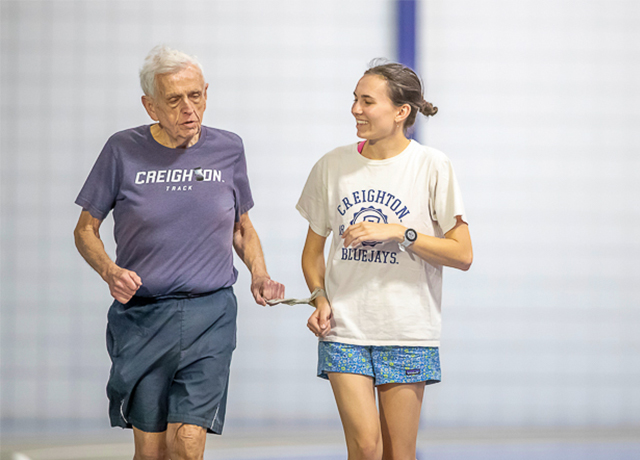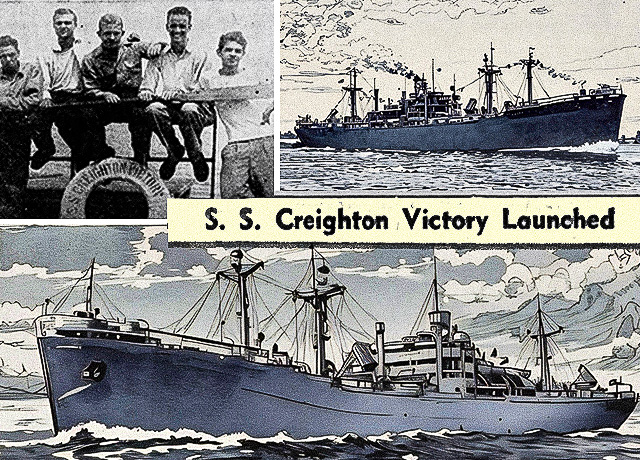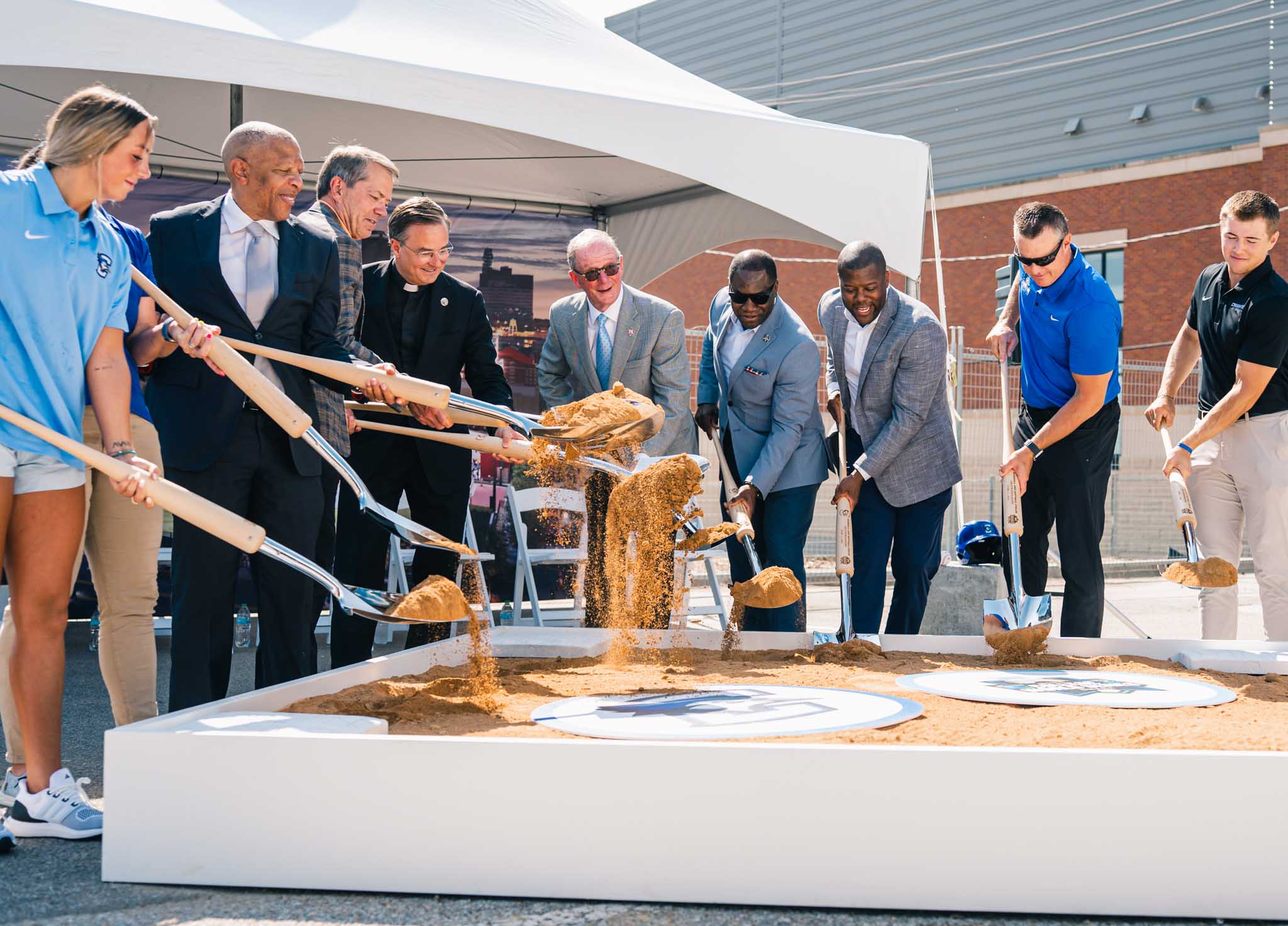Featured Testimonial About Creighton University

It's the dream of every kid who plays basketball.
By Micah Mertes
With the madness of March upon us, we’re continuing our Year of Years series of 2024 anniversaries with a Jays basketball edition.
Featuring ... Doug McDermott's Sports Illustrated cover, two MVC championships, a few of Creighton basketball's greatest coaches, several friends of Creighton who shaped the University's athletic corridor, facts about the great Red McManus, the declaration of Bob Gibson Day and the time the 1963-64 Jays met both Muhammad Ali and Martin Luther King, Jr. during a trip to Miami in which "the travelin' Jays" scored a record 124 points.
Read on for the 2024 anniversaries of some of the coaches, arenas and events that have helped define the last half-century of Creighton basketball.
* * *

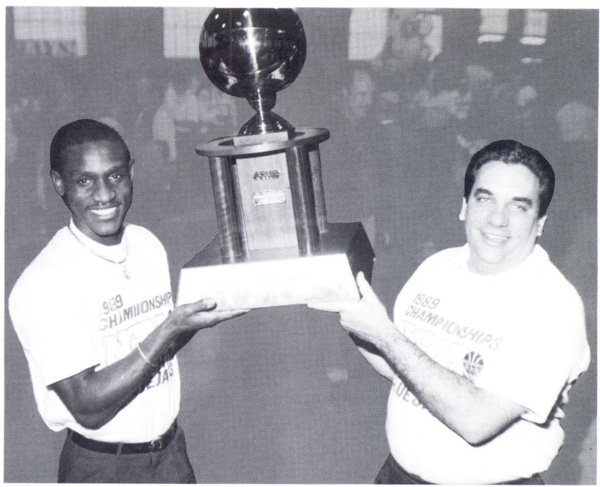
MVC champs
35 years and 25 years
Creighton men’s basketball winning a Missouri Valley Conference tournament was perhaps not that notable of an event. After all, even more than a decade since Creighton left the MVC for the BIG EAST, the Jays still hold the most tournament titles (12) of any team in the Valley.
But the wins of 1989 and 1999 were noteworthy for coming after a long dry spell. In each case, the Jays hadn’t won an MVC tournament in eight years.
Coach Tony Barone’s 1988-89 team — which also won the regular season MVC championship for the first time in 11 years — were true underdogs, with many expecting them to finish seventh among the eight teams in the tournament. The Jays thought otherwise.

In the nerve-racking championship game, Bob Harstad, BA’93, led the Jays to a 79-77 win against Southern Illinois, clinched by senior James Farr’s, BA’89, game-winning basket with two seconds left on the clock.
“It’s settled in now that we’ve won the championship, and we’re going to the NCAA tournament," Harstad told The World-Herald. "It's the dream of every kid who plays basketball.”
The 1998-99 team’s 70-61 MVC tournament win over Evansville was less dramatic in its specifics, though it prompted an even bigger sigh of relief from fans. That year marked the first time the men’s team had won a single game in the MVC tournament under Dana Altman’s tenure so far as coach.
With the victory, the Jays’ jinx was decidedly over, the team claiming seven more championships before leaving the MVC in 2013.
* * *
WNIT champions
20 years

In 2004, the Creighton women’s basketball team made history by winning the Women’s National Invitation Tournament and becoming the first University team to earn a national championship title of any kind.
“We played to win instead of playing not to lose,” Coach Jim Flanery said at the time.
The team’s been playing to win ever since. Over the past 15 years, they’ve gone to the NCAA Tournament six times, making it to the Elite Eight in 2022. Meanwhile, the 2023-24 team is making one of the best regular-season runs in the program’s history.
A Jays fan wrote a World-Herald letter to the editor following the WNIT Championship win that holds just as true today as it did 20 years ago:
"Even during the season's most difficult moments, the Bluejays never quit. They ended a great season by thrilling the fans with their skill, toughness and spirit. What a special group of young women they are."
* * *
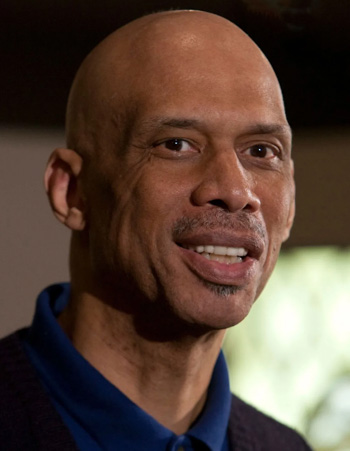
Kareem Abdul-Jabbar
25 years
OK, this isn’t related to Jays basketball. Nonetheless, the time that one of the greatest basketball players of all time visited Creighton deserves mention.
In the fall of 1999, Abdul-Jabbar spoke in the Civic Auditorium to hundreds of Creighton students on the topic of Black profiles in courage, the subject of his new book.
“African-American history has become an issue in the minds of Americans,” Abdul-Jabbar said. “We are starting to straighten things.”
Turnout for the event was lower than expected. This was due, in part, to an extremely 1990s reason. Abdul-Jabbar’s lecture took place at the same time as the season premiere of Friends.
* * *
The Wayne and Eileen Ryan Athletic Center
D.J. Sokol Arena
15 years
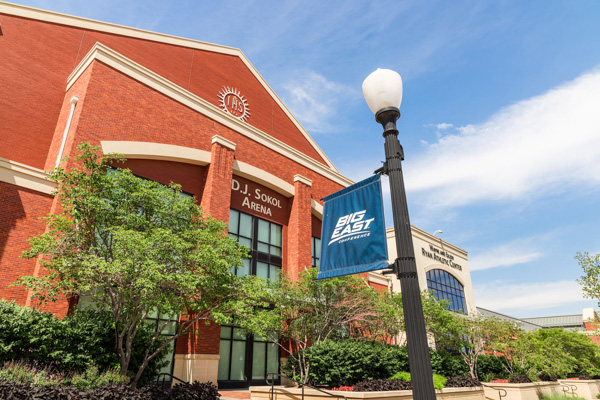
In the fall of 2009, a huge crowd of students, friends and fans came to the new Ryan Athletic Center and D.J. Sokol Arena to watch Creighton volleyball's season opener against Texas Tech. At nearly 2,300 people, it was the largest crowd ever to watch volleyball on campus, five times the previous record set in 1994.
This venue, volleyball coach Kirsten Bernthal Booth said at the time, is a “top-five facility in the country.”
The 78,000-square-foot (and 182,000-brick) home for women’s basketball and volleyball ushered in a new era of Division I women’s athletics at Creighton. The arena was made possible by Wayne, BS’49, MS’51, and Eileen Ryan and David and Peggy Sokol and their families, along with gifts from other Bluejay supporters. D.J. Sokol Arena is named for David and Peggy Sokol’s late son, who passed away at the age of 18 after a two-year battle with cancer.
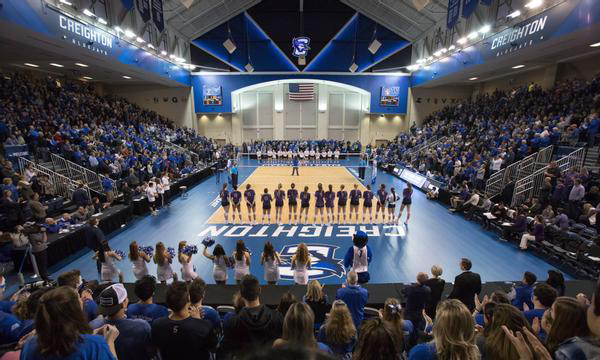
“Visionary donors like the Ryans and Sokols make our dreams of an even stronger athletics program, championed by intensely loyal fans, more of a reality,” Bruce Rasmussen, Creighton’s former McCormick Endowed Athletic Director, said at the time.
With the opening of the venue, said women’s sports pioneer Mary Higgins, BA’73, female athletes finally had a place to call their own.
“At Creighton, our emphasis is always on the student — providing them with a well-rounded collegiate experience,” Higgins said in 2009. “Athletics is a part of that, both for the student-athletes and the students who cheer them on. This beautiful facility really fulfills that mission.”
* * *
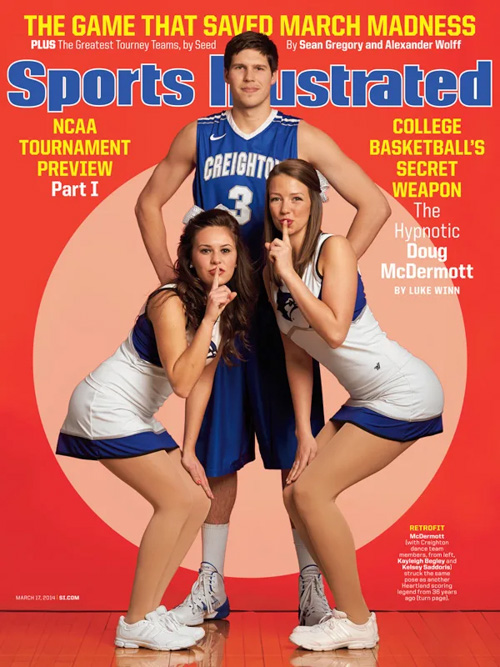
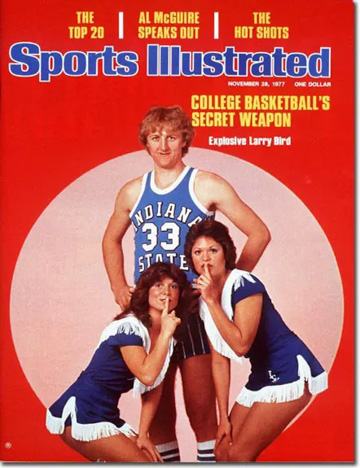
The Doug McDermott Sports Illustrated cover
10 years
We already covered that 2024 is McDermott’s 10-year reunion. But we neglected to mention it’s also been a decade since his Sports Illustrated cover hit the stands.
The March 17, 2014, edition was a throwback to a 1977 cover featuring a (then-collegiate) Larry Bird, whom McDermott had passed on the all-time NCAA scoring chart. Just a week prior to the 2014 issue dropping, McDermott became the eighth player in D1 history to score 3,000 points.
You can watch the photoshoot of the SI cover — which also featured Creighton dance team members Kelsey Saddoris, BS'15, and Kayleigh (Begley) Kontz, BSBA’17 — below.
* * *
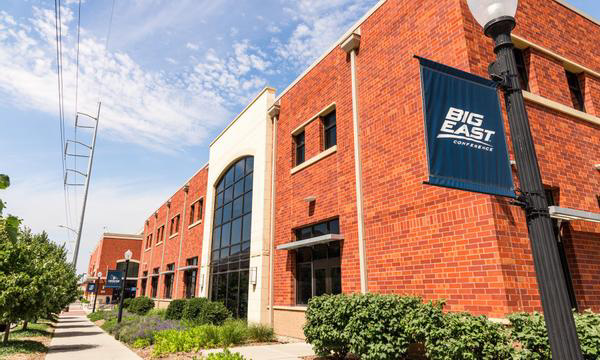
The Championship Center
10 years
The 45,000-square-foot Championship Center — an integral piece of Creighton’s east-campus athletics corridor — opened its doors to great fanfare in the summer of 2014.
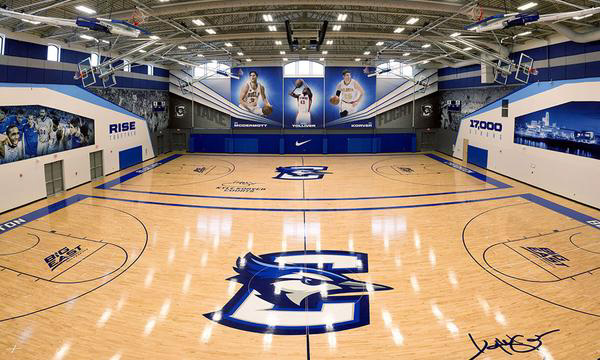
More than 500 donors contributed to the Championship Center, with Ruth and Bill Scott, the Scott Family Foundation, Wayne Ryan, Connie Ryan and Rhonda and Howard Hawks taking the lead on the project. A gift from the Peter Kiewit Foundation allowed Creighton to purchase the land where the athletic corridor facilities are located.
Serving primarily as the practice facility for men’s basketball, the Championship Center offers two courts named after Kyle Korver, BA’03, a players’ lounge, video/lecture room, hydrotherapy room, underwater treadmill, polar-plunge pool and centers for athletic performance and academic resources for all Creighton student-athletes.
As state-of-the-art as the Championship Center was/is, it didn’t neglect to pay tribute to its past, with assistant coaches’ offices named for such legends as Dana Altman, Tony Barone, Tom Apke, Eddie Sutton and John “Red” McManus.
* * *
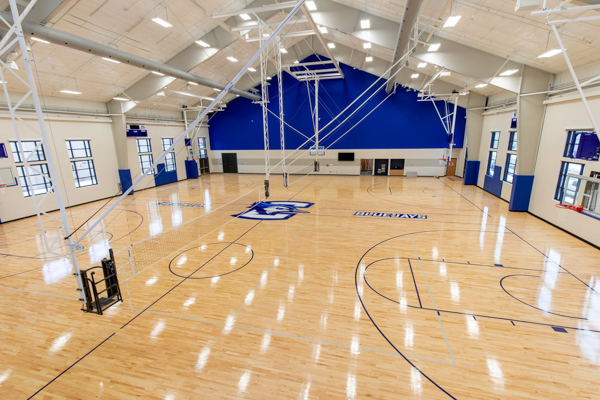
The Ruth Scott Training Center
5 years
Another gem in Creighton's athletic corridor, the $5 million training facility opened in 2019 primarily to accommodate women's basketball and volleyball. Since then, the Ruth has served as a vital resource for both programs, providing a 16,109 square-foot space to ensure each team has ample court time. The facility sends a strong message: when it comes to women's athletics, Creighton is all-in.
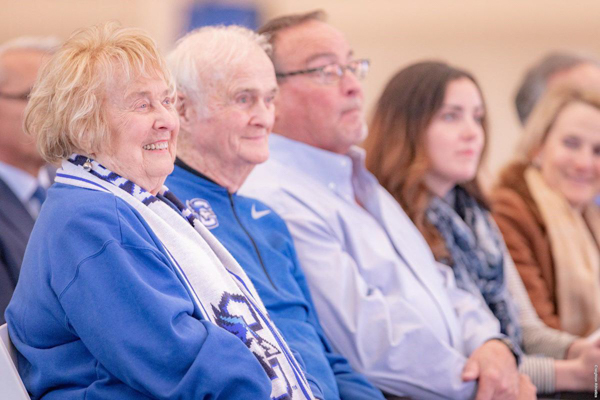
The Ruth was made possible by 130 donors, with the lead gift coming from the facility's namesake, Ruth and Bill Scott, longtime Creighton supporters who helped transform the face of campus through School of Law legal services, athletic programs and brick-and-mortar investments in Creighton medicine, dentistry and sports.
"This is such a happy and historic day for our women's teams, coaches and administrators who have waited patiently for this moment," said Creighton President the Rev. Daniel S. Hendrickson, SJ, PhD, at The Ruth's dedication in 2019. "To the donors who supported the Ruth, I applaud you for your vision of a better experience for our student-athletes."
* * *
Writer’s note: We could, of course, dedicate full features to any of the following individuals. And at some point, we may. A comprehensive account of the legend of Red McManus, for instance, seems long overdue. Stay tuned. Go Jays.
* * *
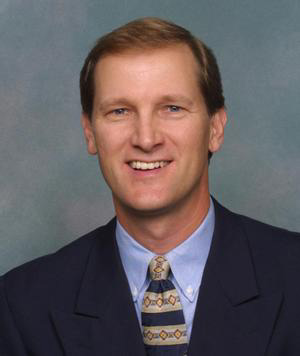
Dana Altman
30 years
In the spring of 1994, Dana Altman became the head coach of men’s basketball with a crystal-clear mission in mind: rebuild, rebuild, rebuild.
“I’m excited about the opportunity to build something here,” said the then-35-year-old coach. “I’m not sure how long it’s going to take. We will work as quickly as we can and as hard as we can to bring it about as soon as possible.”
It took a while. Coming off a 1993-94 record of 7-22, Altman’s Jays would improve over the next seven consecutive seasons. The aforementioned 1998-99 team won the MVC tournament and made it to the second round of the NCAA Tournament. (To rally support for the revitalized team, Creighton started The Dana Altman Show, a 30-minute program that aired every Saturday morning on KMTV.)

Over the next decade, Altman — alongside such powerhouse players as Rodney Buford, Ryan Sears, BA’01; Ben Walker, BA’02; Kyle Korver, Nate Funk, BSBA’07; and Anthony Tolliver, BSBA’07 — raised Creighton’s game considerably. Altman led the Jays to an increase in victories in 10 of his last 15 years while further establishing the program on a national scale.
He ended his tenure with the Jays with a 327-176 record, the most wins of any basketball coach in Creighton’s history. (Though his successor is nipping at his heels.)
At Altman’s first press conference as the new University of Oregon coach in 2010, he cracked a joke about making sure that this time he signed all his new employer’s paperwork when committing to his new role — no doubt a painfully funny quip for longtime Creighton fans.
* * *
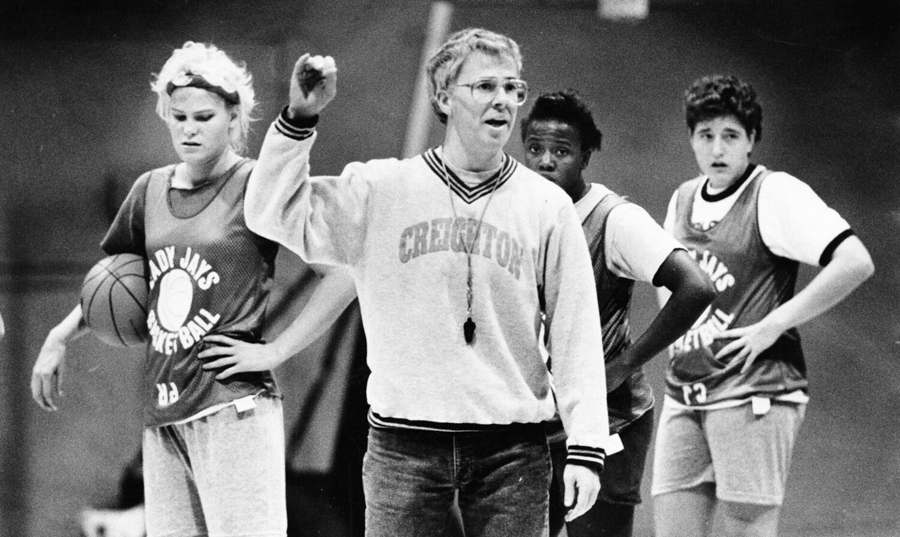
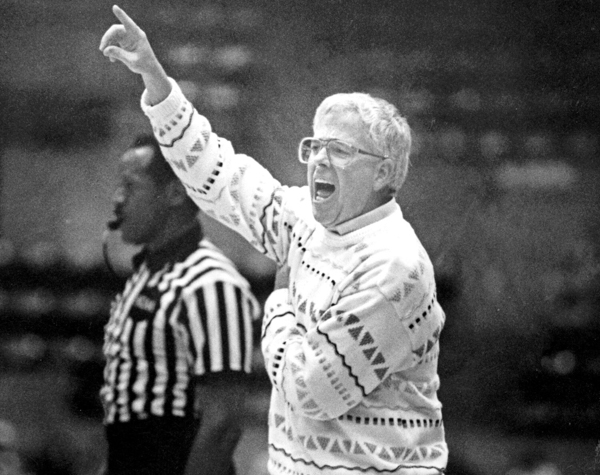
Bruce Rasmussen
30 years
The same year Altman came to Creighton, Bruce Rasmussen took the post of athletic director. Rasmussen — 44 at the time — had served as the associate director since 1992 and as women’s basketball coach for the 12 years prior.
“I strongly believe in Creighton University and its mission,” he said in 1994.
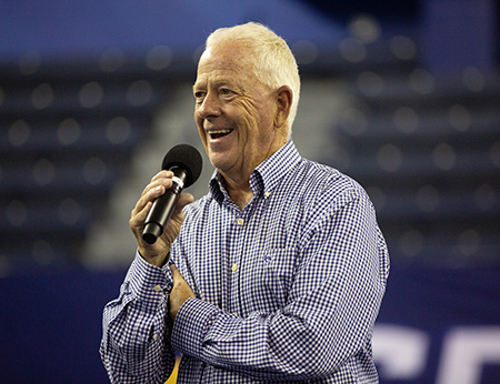
In 2021, Rasmussen retired after 41 years at Creighton (27 of them as AD) and passed the torch to Marcus Blossom, McCormick Endowed Athletic Director.
In his farewell letter, Rasmussen wrote:
“Being the athletic director at Creighton University has been the privilege of my lifetime. I will dearly miss the daily relationships with my awesome coaches, staff and students.
“It has been an extraordinary honor to have served Creighton — a special place with special people — and being a part of something bigger than myself has been one of the joys of my life.
"I take great comfort in knowing that the program is in good hands."
* * *

The start of the Apke era and the death of Mike Heck
50 years
In the spring of 1974, former Creighton player Tom Apke, BA’65 — assistant coach to Eddie Sutton — was named the new athletic director and head coach of men’s basketball.
At only 32, Apke was one of the youngest college basketball head coaches (and athletic directors) in the country.
(Sidenote: Back in the day, one person held both roles: MBB coach and AD. That changed during the Apke era, due to a number of factors: program growth, renewed membership in the Missouri Valley Conference, the addition of the Kiewit Fitness Center, the new baseball and softball fields, the emergence of women’s athletics, year-round recruiting efforts, etc. Dan Offenburger, MS’63, took on the athletic director role in 1980.)
When Apke started as head coach in 1974, he told the Omaha World-Herald, “(Creighton) is the place where I always wanted to coach. If I’m as successful as I hope to be, I may live to be the grand old man of Creighton University basketball.”

Expectations were low for Apke’s first year. Sutton’s final season had been the best in program history up to that point. with the Jays going to the Sweet 16. But by the time Apke started, three of the best players had graduated, and more than a third of the new team were freshmen.
Apke, for his part, put a lot of stock in his returning players, in particular, Mike Heck, the 7-foot-1 center from Papillion (Creighton’s first athlete over 7 feet tall.)
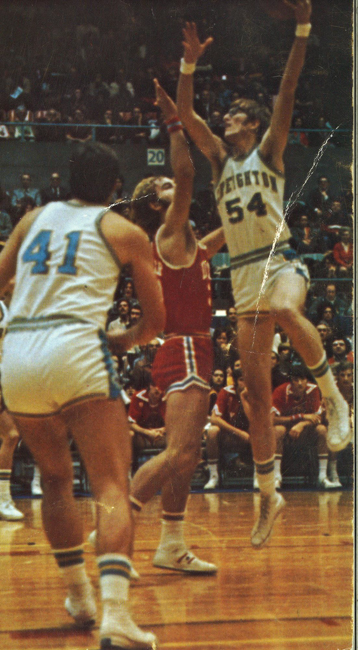
“I think he’s going to be a great player someday,” Apke said of Heck. “I hope that 'someday' comes this season.”
Apke’s faith in Heck proved out. In the season opener against North Dakota’s Fighting Hawks, Heck made nine rebounds and scored 24 points.
When Heck exited the Civic Auditorium court at the end of his 33 minutes in the game, the crowd gave him a standing ovation. It would be the last game he ever played.
Two days later, Heck was found dead in his room on the seventh floor of Swanson Hall. The 20-year-old's official cause of death was cardiac complications due to an enlarged heart.
“Very few things in my life have shocked me more,” Eddie Sutton, who had recruited Heck, told United Press International. “I always felt that Mike would be one of Creighton’s all-time great players by the time he graduated.”
Heck was also a quiet, kind, lovely person beloved by every one of his fellow players. The team was distraught. Apke wondered if they should cancel the coming weekend’s Creighton Classic, with three teams already en route to Omaha. Then he got a call from Mike’s father, Nick Heck.
“Tell the boys to play,” he told Apke.
The Jays won the next game. They kept winning most of the games that followed. In a season where few expected the Jays to win more than half the time, they went 20-7, with a school-record-breaking 14-game winning streak in the heart of the season. They also made it to the first round of the NCAA Tournament, something no other Creighton men’s basketball coach had (or has since) accomplished in his first season.

The team dedicated the season to Heck, wearing wristbands with his number (54) at every game.
Few of Apke’s subsequent six seasons were as momentous as his first, though he did lead the Jays back into the Missouri Valley in 1977-78 with victories in the conference regular and conference tournament titles, earning an NCAA Tournament bid in the process.
He would make it to the Big Dance once more with his final Creighton team (1980-81) before taking the head coaching job with the University of Colorado. He left Creighton with a 130-64 record. In all, Apke spent 17 years at Creighton — four as a player, six as an assistant coach and seven as head coach.
* * *
John “Red” McManus
65 years
“I learned a great deal from Eddie Sutton,” Apke said after being hired as Creighton’s head coach in 1974. “But I played for a man I owe a great deal to: Red McManus.
“(Red) believed in an extremely fast, exciting, helter-skelter, we’re-gonna-get-more-shots-off-than-you type of game.”
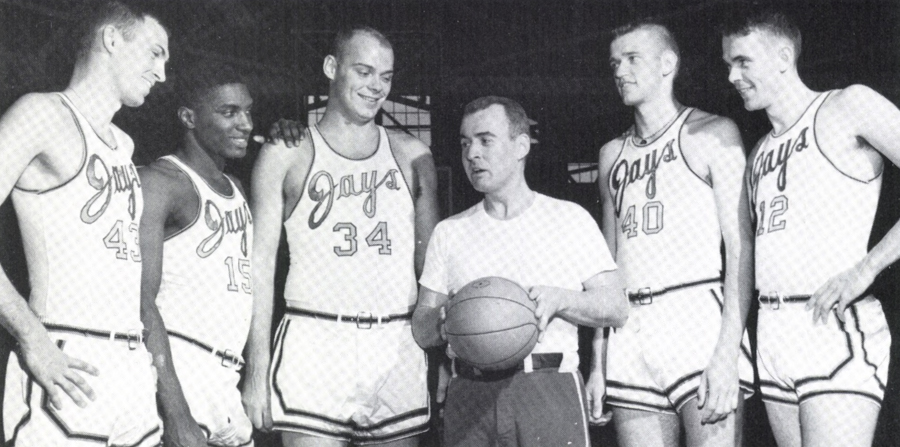

There’s so much to say about McManus. Beyond bringing Creighton basketball back to national prominence during his 1959 to 1969 tenure, the man was just a colorful character. As much as any other figure mentioned in this article, Red deserves his own comprehensive feature, and we’ll give him one someday.
In the meantime, here are some Red McManus facts:
• He was called Red for his red hair, fiery temper and the way his face flushed during games.
• Red brought “big-time basketball” back to Creighton following a post-war slump. He did so by committing the team to an aggressive road schedule. Red liked to say the Jays would go “border to border and coast to coast” and “all over hell to play.” Red’s successor, Coach Eddie Sutton, would continue the tradition McManus started. Over three years, Sutton’s Jays flew 65,000 miles, traveled to 20 states and even toured 10 cities in South America, prompting Sports Illustrated to write a feature on “the travelin’ Jays.”

• Red’s players included Paul Silas, BSBA’64; Neil Johnson, Bob Portman, BA’69; and Wally Anderzunas, BA'69. In 1984, those four, about 60 other former McManus players and more than 700 people came together to pay tribute to McManus at a special event in Peony Park. Dozens spoke about the man of the hour:
“Whenever Red called, you were ready. Not only in a basketball game but beyond. That stuck with most of us.”
“We prayed before the games, not to win alone but to play the game honorably. We won so often not because we were a great team but because we were closer to each other than the other teams were … thanks to Red.”
“(Red McManus) is the kindest, most considerate, nicest person I’ve ever met — off the court.”
• Red was known for having something of a split personality. Friendly and even a bit shy in everyday life but forehead-vein-popping mad once the game started, groaning and cursing at every missed shot or call he didn't like. (Another amusing thing about Red was the hokey way he cursed. He once, for instance, called a rival coach, “You horse’s butt!”)
• One of Red’s best friends was another Creighton legend — Irma Trumbauer, cafeteria manager and counselor/friend to thousands of students, faculty and staff during her 40-year tenure at Creighton. (We also plan to do a big feature on Irma at some point.) During Red’s bachelor days, she repeatedly tried to set him up on dates with various nice girls. At the age of 37, McManus married Mary Jean (Timmerman) McManus.
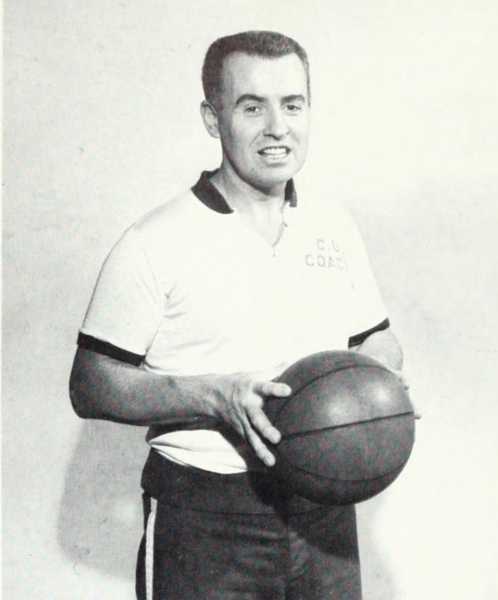
• When another coaching legend — Julius Vincent “Duce” Belford — was on his death bed, Red came to see him at the hospital every day to ask his mentor for advice, allowing Duce to live his last days with purpose and dignity.
• Red was the coach who brought Creighton "out of the Old Gym and into the Civic Auditorium." The Jays started playing all their home games there in 1961, during McManus’ third season as coach. When the Creighton men’s team played its final game in the Civic in 2003, it was Red who flipped the switch to turn off the lights one last time.
• After resigning from Creighton in 1969, Red went on to run a successful tuxedo rental business in Omaha. He remained a part of the Creighton basketball program the rest of his life. Subsequent Jays coaches still called McManus “Coach.”
• On Red’s 87th birthday in 2012 — the year before his death — Coach Greg McDermott and the team invited him to practice and sang Happy Birthday to him.
• In the 1990s, Coach Dana Altman regularly took Red on road trips. One time, while sitting at the end of the bench at an away game, Red repeatedly shouted at the referees and nearly earned the team a technical foul.
* * *
Meeting Muhammad Ali and Martin Luther King, Jr.
60 years
Another deserves-its-own-Creighton-feature-and-will-maybe-one-day-get-one story: That time in February 1964, when Red McManus' Jays (a roster that included Silas and Apke) went to Miami, routed the Hurricanes 124-94 — still the record for the most points the Jays have scored in a single game, "the greatest game we ever played," McManus said — and, on the day before that historic victory, met Cassius Clay, a few weeks before he changed his name to Muhammad Ali.

The soon-to-be heavyweight champ surprised the Jays by showing up to their practice and challenging Silas to a game of one-on-one. Ali was reportedly a terrible basketball player, but he still "bested" Silas for the benefit of the nearby TV cameras. (If you have images or video footage of the Silas vs. Ali game, please send them to micahmertes@creighton.edu.)
To place this all in its historical context, one week later, Clay met the Beatles. The week after that, he beat Sonny Liston in the heavyweight title fight in one of the greatest moments in sports history, shortly thereafter changing his name to Muhammad Ali.
After Creighton's win over Miami, Clay sent a car for the Jays, and Silas and four of his teammates went to the boxer's home, where they ate dinner and talked for hours until Clay eventually challenged Silas to an impromptu boxing match.
“I told him, ‘You are out of your mind,’” Silas told the Charlotte Observer in 2016. “But it was great. He took so much time with us, and he didn’t know us at all. I think he just loved people.”
As if playing in the Jays' highest-scoring game of all time and squaring up against Muhammad Ali weren't enough, the team also met Martin Luther King, Jr., on that trip.
The Jays were on their way back to Omaha and changing planes at Chicago's O'Hare Airport when they saw King and started up a conversation. (This was just six months after King had delivered his "I Have a Dream" speech in Washington).
In the same Charlotte Observer interview in 2016, Silas said that when King learned that the players were in college, he said, "That's good. You have to get an education."
Silas had with him a cardboard placard that Clay had signed the day before. He asked King to sign his name next to to Clay's ... the names of two of the great men of the 20th century side by side. Somewhere along the way, Silas lost those autographs. But, he said, he'd never forget that moment.
(The World-Herald wrote a nice feature about this.)
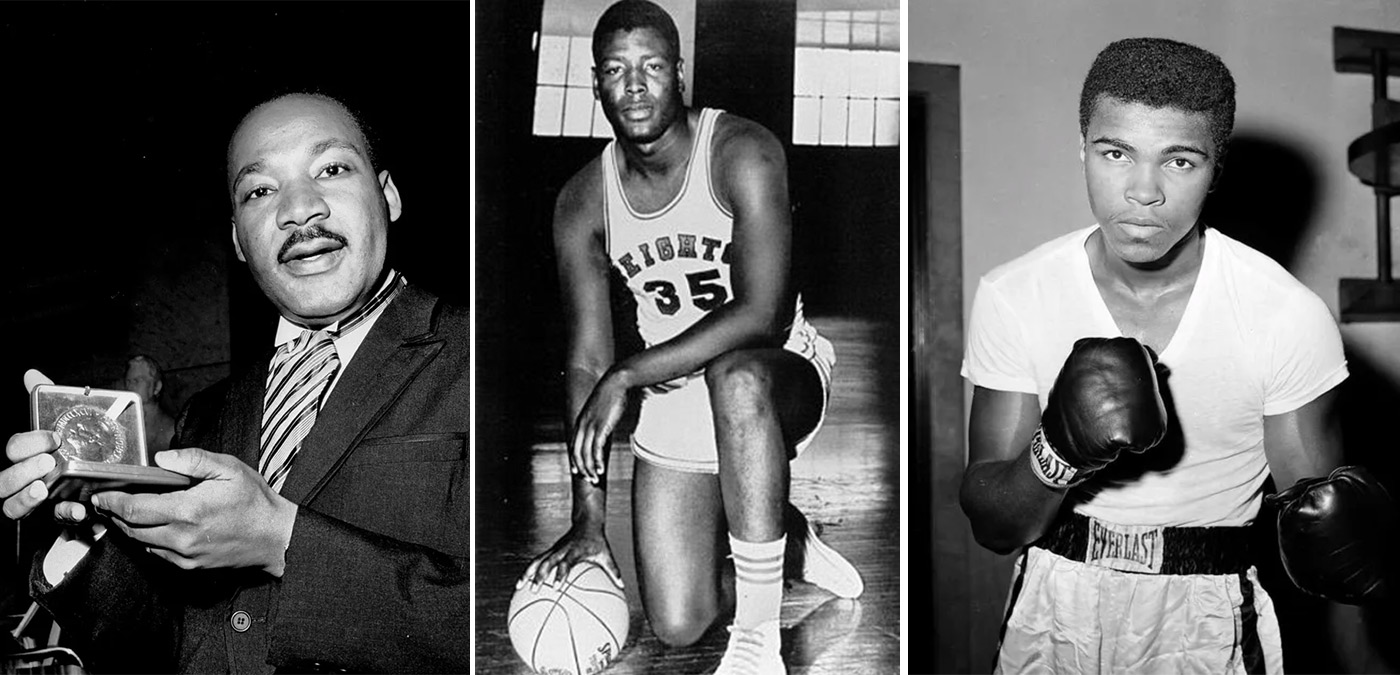
* * *
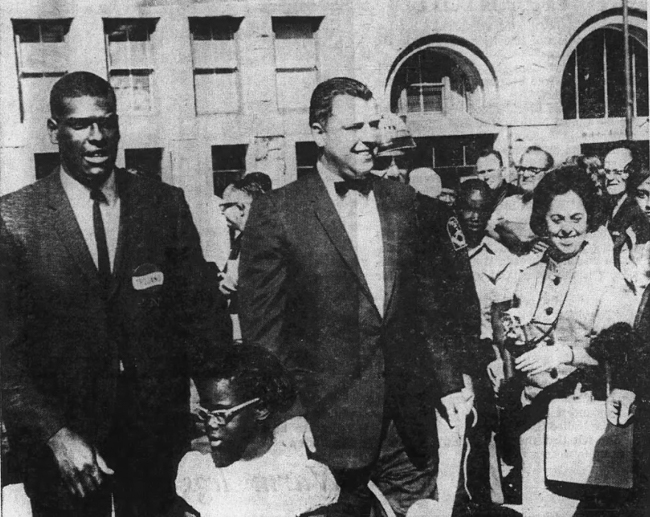
Bob Gibson
60 years
This very special basketball edition of Year of Years is already far too long for us to go into detail about the time, in 1964, when the greatest athlete in Creighton history (who, mind you, played baseball and basketball) led the St. Louis Cardinals to a World Series win, took the title of series MVP and soon after found the time to visit Omaha, where a huge crowd, the mayor, the governor and the Creighton President H.W. Linn, SJ, greeted him with the declaration that Oct. 16 shall forever be known as Bob Gibson Day.
More to come on Bob Gibson Day, Red McManus and more in future Year of Years installments.
* * *
Year of Years 2024 archive
Year of Years, part 1.5a: Five decades of the Kiewit Fitness Center
Year of Years, part 1.5b: The history of Creighton's swimming pool
Stay tuned for another edition in our Year of Years anniversaries series in the coming weeks. And check out previous anniversary roundups from:
